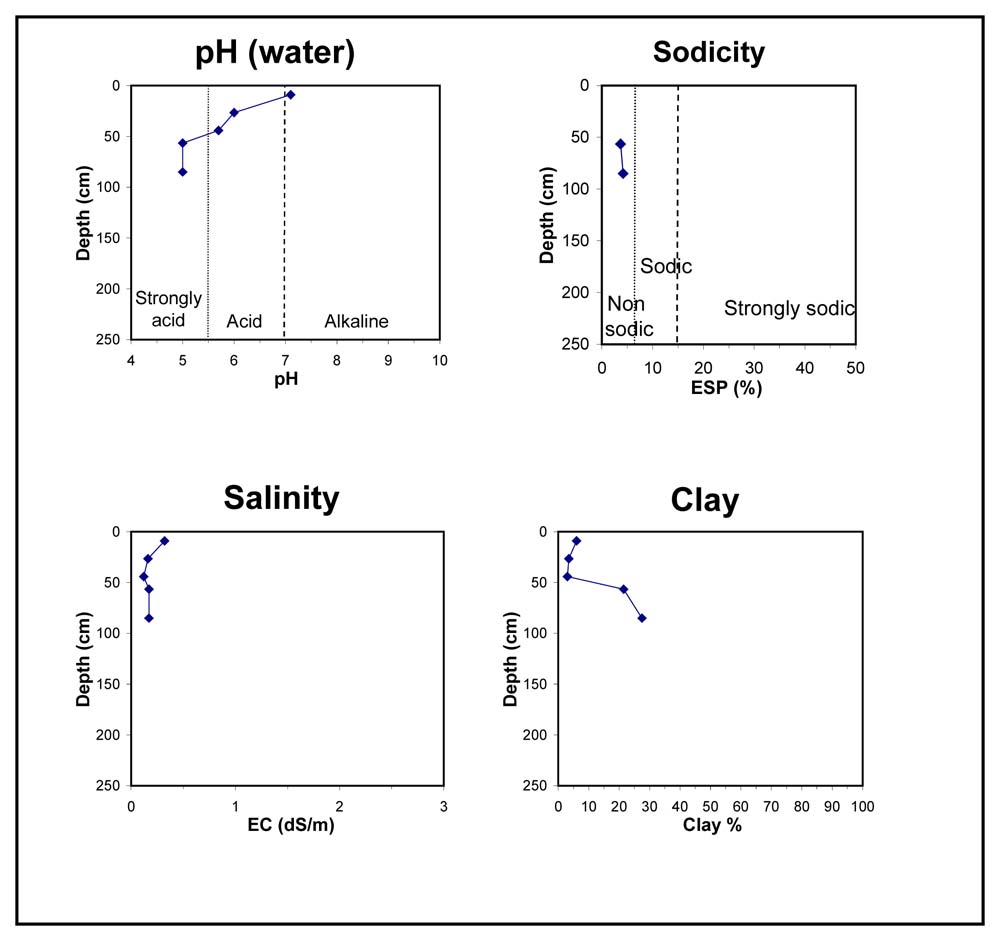GL28
| Site: GL28 | Land Unit: Follet Dunes and Plains |
| Aust. Soil Class.: Bleach-Mottled, Eutrophic, Brown KUROSOL (confidence level 1) | |
 |
The majority of this land unit falls south of the Kanawinka fault. This land unit comprises areas with deep sand deposits. The residual landscape is thought to be influenced by the retreat of the Murray Sea which left stranded beach ridges oriented south west–north east. These were subsequently covered by superficial sand sheets in later depositional phases, which formed the landscape seen today. The major landforms in this land unit are dunes and swales. Podosols and Kurosols or Chromosols are the major soil types found on the dunes and rises. Podosols are soils with a ‘coffee rock’ layer (refer to photograph). The Kurosols or Chromosols tend to have a deep sandy topsoil over the clay. The common soil types on the swales are black cracking clay (Vertosols) or Grey Sodosols. Some Ferric Kurosols or Chromosols can also occur on the swales or lower slopes of the dunes. |
| Slope: 4% | Geology: Quaternary aeolian |
| Landform pattern: Gently undulating plains | Position in landscape: Lower slope |
| Internal drainage: Imperfectly drained |
Soil Profile Morphology
| A1 | 0-10 cm | Very dark greyish brown (10YR3/2) sand, apedal, pH 7.1; transition to: |
| A21 | 10-30 cm | Dark grey (10YR4/1) sand, bleached (10YR6/1) when dry, apedal, pH 6.0; transition to: |
| A22 | 30-50 cm | grey (10YR4/1) sand, bleached (10YR7/1) when dry, apedal, pH 5.7; transition to: |
| Subsoil | ||
| B2 | 50-80 cm | Dark brown (10YR3/3) sandy clay loam, many distinct red, orange and yellow mottles, weak to massive subangular blocky structure, pH 5.0; transition to: |
| B3 | 80-120 cm | Yellowish brown (10YR5/4), sandy clay loam, many distinct red and yellow mottles from weathered sediments, weak to massive structure, pH 5.0. |
Key profile features:
- Strong texture contrast between topsoil and subsoil
- Deep sandy topsoil
- Strongly acidic topsoil
- Mottled subsoil



